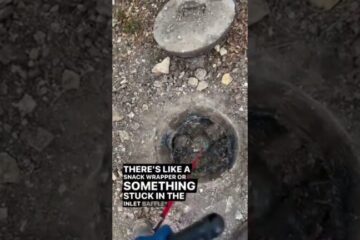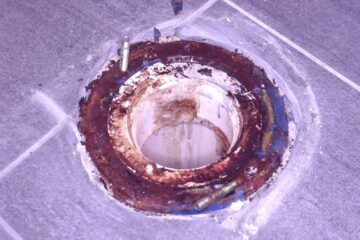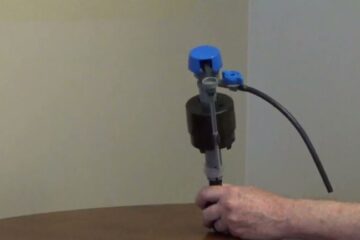In the video titled “How to Replace Your Thermocouple and Keep Your Pilot Light Lit,” Brandon Baril, owner and operator of Quick Water Heater, demonstrates a simple and cost-effective method to fix a non-functioning pilot light in a water heater. By replacing the thermocouple, which is responsible for allowing the water heater to turn on, users can easily solve the issue and prevent the pilot light from constantly going out.
This step-by-step tutorial provides all the necessary information and guidance needed to successfully replace the thermocouple, ensuring the water heater remains operational. The process involves turning off the gas, removing the necessary components, installing the new thermocouple, and reassembling everything securely. Following these steps, users can restore their water heater and avoid the need for professional assistance.
Brandon Baril, owner and operator of Quick Water Heater, presents a video tutorial on “How to Replace Your Thermocouple and Keep Your Pilot Light Lit,” providing a simple and affordable solution for individuals experiencing issues with their water heater’s pilot light. By replacing the broken thermocouple, which is crucial for the functioning of the water heater, users can resolve the problem efficiently.
Throughout the video, Brandon Baril offers a step-by-step demonstration of the process, highlighting the significance of turning off the gas, removing and replacing specific components, and ensuring secure connections. By following these instructions, individuals can easily fix their pilot light issues without the need for professional assistance, allowing their water heater to function properly once more.
Removing the old thermocouple
To replace a thermocouple and ensure that your water heater’s pilot light stays lit, there are several steps you need to follow. This process is simple and requires minimal tools. By following these instructions, you will be able to remove the old thermocouple and prepare for installing the new one.

Turning off the gas
Before starting any work on your water heater, it is crucial to turn off the gas supply to ensure safety. Locate the gas valve, usually found near the bottom of the water heater, and turn it to the “Off” position. This step is necessary to prevent any gas leaks while you work on the thermocouple replacement.
Removing the cover
Once the gas supply is turned off, you can proceed to remove the cover of the water heater. The cover is usually held in place with screws or clips, which can be easily undone using a simple wrench or screwdriver. Removing the cover will grant you access to the internal components of the water heater, including the thermocouple.
Gathering the necessary tools
Before moving forward, it is important to prepare the tools required for the thermocouple replacement. The tools you may need include a wrench, a screwdriver, and possibly pliers, depending on the specific water heater model. Having these tools readily available will help you proceed smoothly with the replacement process.
Removing the colors underneath
Once the cover is off, you will notice a series of wires and components underneath. These wires, also known as colors, need to be removed carefully to gain access to the pilot assembly and the old thermocouple. Take pictures or make notes of the color arrangement before removing them to ensure correct reassembly later.
Understanding the pilot assembly
The pilot assembly is a crucial part of the water heater that needs to be understood before proceeding. It consists of various components, including the pilot flame and the thermocouple. The pilot flame, when ignited, generates the necessary heat for the thermocouple to function properly.
Identifying the old thermocouple
Locate the old thermocouple within the pilot assembly. It is usually a small copper tube connected to the controller or thermostat. Take note of its position and how it is attached to other components. Understanding the old thermocouple’s position will aid in the installation of the new thermocouple.
Purchasing the new thermocouple
Before proceeding with the installation, it is essential to purchase the correct replacement thermocouple. Thermocouples can vary in size and configuration, so it is recommended to contact the manufacturer or consult the water heater’s documentation to ensure purchasing the right thermocouple. Once acquired, proceed to the next section for installation instructions.
Installing the new thermocouple
To ensure the pilot light stays lit, it is crucial to correctly install the new thermocouple in the water heater. Follow these steps to install the new thermocouple effectively.
Placing the new thermocouple
Take the new thermocouple out of its packaging and position it in the same location where the old thermocouple was previously installed. Ensure that all connections are secure.
Ensuring direct contact between the pilot flame and the thermocouple
To guarantee the proper functioning of the thermocouple, it is important to ensure direct contact between the pilot flame and the thermocouple. This is necessary for the thermocouple to detect the heat generated by the flame and signal the controller to keep the pilot light lit.
Reassembling the parts
Carefully reassemble the components of the water heater, including the colors, ensuring that everything is securely in place. Refer to the pictures or notes taken earlier to correctly attach the colors and restore the water heater to its original state.
Tightening the connections
As you reassemble the water heater, make sure to tighten all the connections securely. The tightness of the connections will ensure that there are no gas leaks and that the thermocouple functions properly.
Turning on the pilot light
Once the reassembly is complete and all connections are tightened, it is time to move forward and turn on the pilot light. Depending on the specific water heater model, consult the user manual for instructions on how to safely turn on the pilot light.
Verifying proper functioning
After installing the new thermocouple, it is crucial to verify that the water heater is functioning correctly and that the pilot light stays lit. Follow these steps to ensure the proper functioning of the water heater.
Checking the pilot light
Observe the pilot light to confirm that it remains lit after turning on the water heater. The pilot light should remain on continuously without any flickering or going out on its own. If you notice any issues with the pilot light, double-check the installation and make sure the thermocouple is properly positioned.
Confirming the stability of the flame
Inspect the flame produced by the pilot light. The flame should be stable and consistent, without any irregularities. A stable flame indicates that the thermocouple is functioning properly and generating enough heat to keep the pilot light lit.
Testing the control knob
Adjust the control knob on the water heater to test if it responds accurately. The control knob should be able to regulate the temperature of the water heater effectively. If the control knob is unresponsive or produces inconsistent results, recheck the installation and connections.
Ensuring the water heater is back up and running
After confirming the proper functioning of the pilot light, flame stability, and control knob, it is safe to say that the water heater is back up and running. Enjoy your hot water supply knowing that the thermocouple replacement has resolved the issue of the pilot light not staying lit.
Additional tips to save on water heating bill
To further optimize your water heating system and save on energy costs, consider implementing the following tips:
- Lower the thermostat setting on the water heater to reduce energy consumption.
- Insulate your water heater and pipes to minimize heat loss.
- Install low-flow fixtures and aerators to conserve hot water.
- Regularly maintain your water heater by flushing it to remove sediment buildup.
- Consider upgrading to a more energy-efficient water heater model, such as a tankless or solar-powered unit.
By following these additional tips, you can reduce your water heating expenses and contribute to a more sustainable environment.
Conclusion
Replacing a thermocouple is a simple and cost-effective solution to ensure that your water heater’s pilot light stays lit. By following the steps outlined in this article, you can safely remove the old thermocouple, install a new one, and verify the proper functioning of your water heater. Remember to consult the manufacturer’s documentation and seek professional assistance if needed. By taking these measures, you can enjoy a reliable and efficient water heating system while potentially saving on energy costs.



